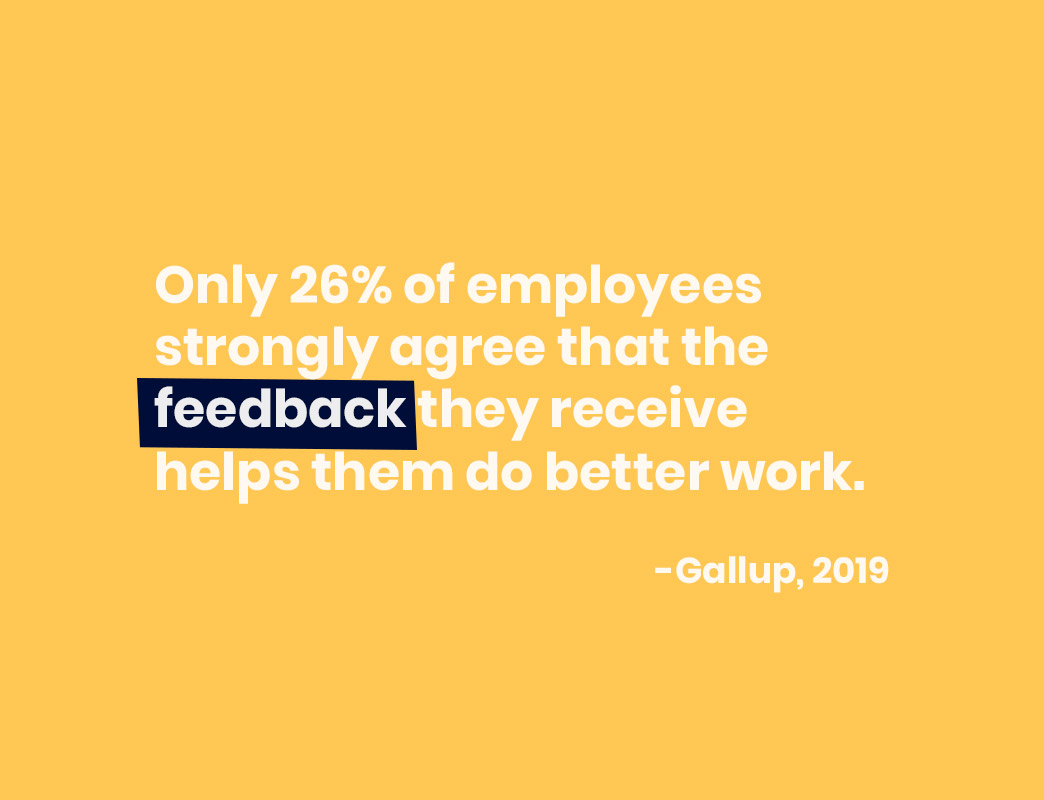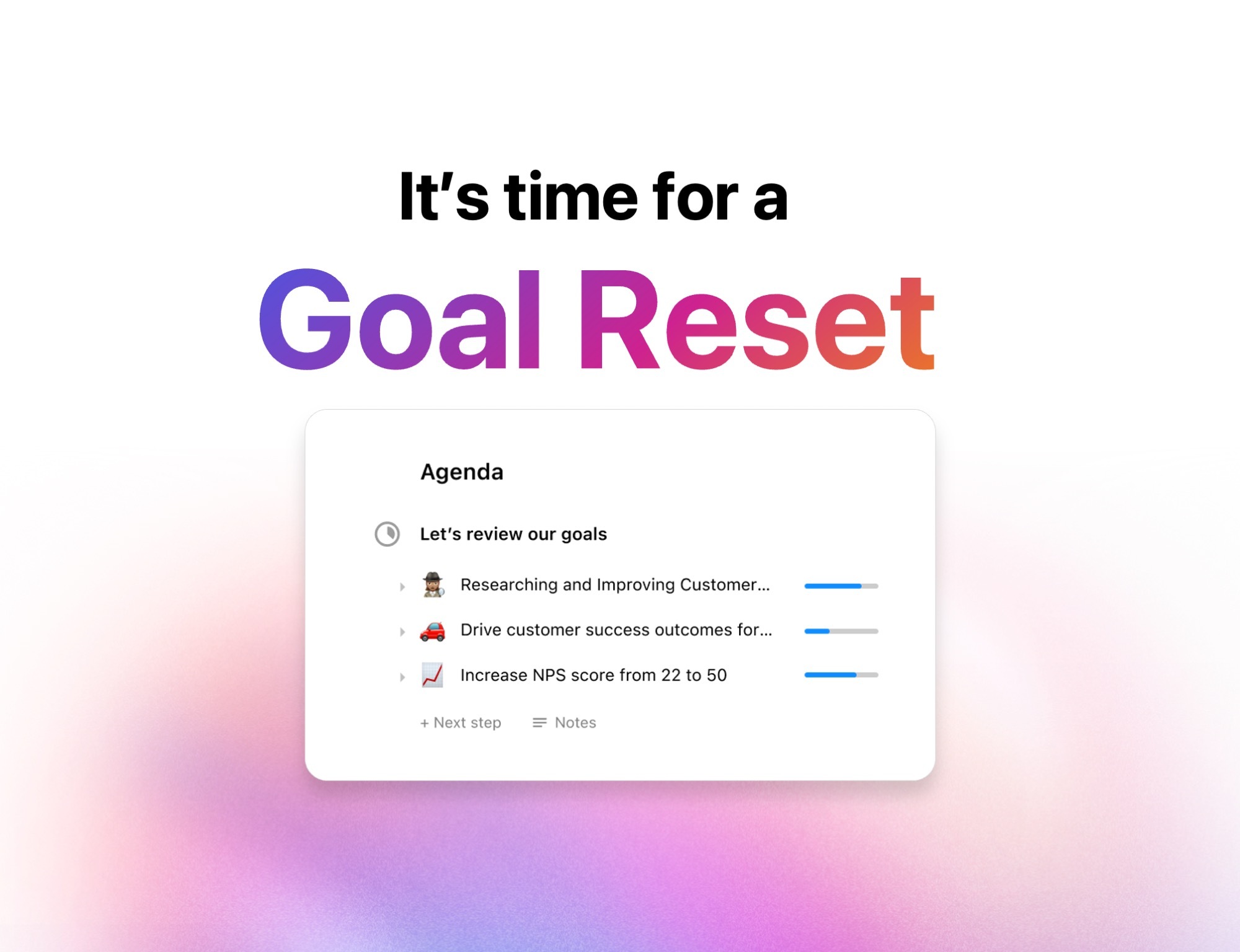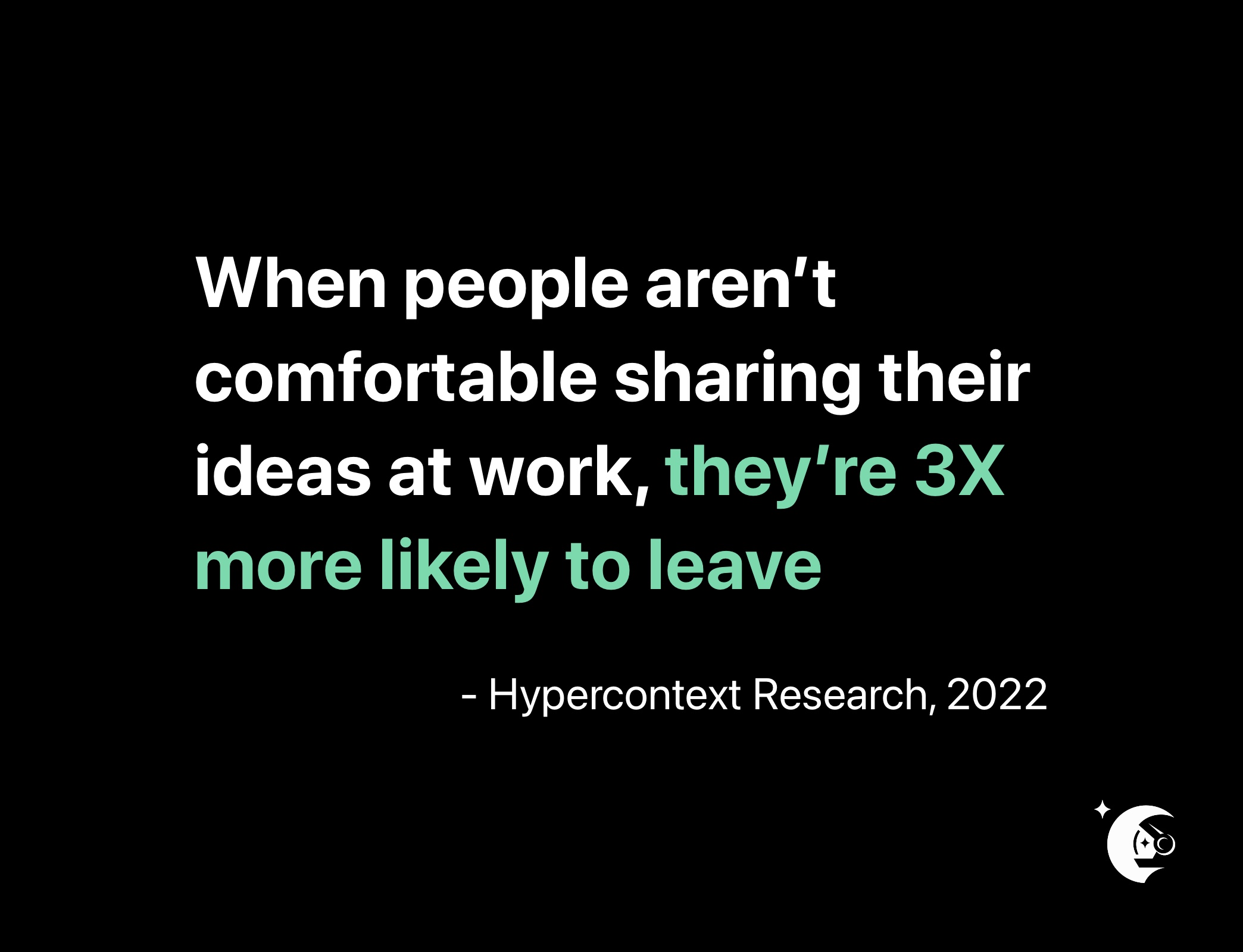How to give employee feedback that sticks
9 min readHigh-performance teams need effective employee feedback and ongoing coaching to thrive. Learn about 4 ways to make employee feedback stick.

It’s in our nature to seek feedback and validation from our peers and leaders.
Way back when Maslow created his Hierarchy of Needs, esteem took a coveted spot on the list. People love to excel. What’s more? People love it when others know they excel, too. That’s where employee feedback comes into play. We seek out feedback to boost our self-esteem and find room to improve.
Yet only 26% of the feedback we get feels effective – that it’s genuine, actionable, and applicable to our roles at work (and in our lives).
Why?
Well, feedback can be paradoxical. Self-aware individuals might seek it out looking for honesty, but really hoping for validation. Then, when any sort of criticism rolls off the tongue, we crawl back into our shells. It triggers our first line of defense when someone pokes holes in our arguments or challenges us to do better.
And when we crawl back into our shells, it makes the giver feel awkward. Then, you guessed it, both parties are uncomfortable.
That uncomfortable feeling is what led us here, to a place where a slim quarter of people find employee feedback helpful. As a manager, you can change that.
Real, honest feedback is vital to growth, both personally and professionally. And while many leaders shy away from sharing honest employee feedback, all parties benefit when leaders hand out feedback often.
Giving regular doses of motivational and developmental feedback empowers employees and builds confidence. So don’t feel like you need to wait until a quarterly review to address concerns. When managers are proactive with sharing feedback regularly, employees feel they have the support and resources they need to excel at work. Better morale and higher productivity follow.
Let’s dive in and discuss why better employee feedback matters to business and how you can be a manager who shares feedback that sticks.
Building a culture of feedback reduces turnover and improves performance
Business outcomes skyrocket when you put employee growth and development on your weekly radar. In fact, companies that invest in employee training and have highly engaged employees see 24% higher profits and a 20% increase in sales than those that don’t.
“A feedback-rich environment drives business outcomes. Gallup research shows that having conversations about development can improve employee engagement, which in turn improves productivity and profitability.”
– Chris Musser for Gallup
It’s important to keep in mind, though, that a high-performance culture can’t exist without effective feedback and ongoing coaching; you need both to thrive. However, many people view feedback and coaching through the same lens, when in fact, they’re quite different (though equally important).
Pair effective feedback with ongoing coaching
As Gallup puts it, feedback is focused on past events while coaching is focused on what’s next.
To build an environment ripe for success, you need to go beyond post-focused feedback and work towards providing your team with ongoing coaching for future success. Rather than focusing on past mistakes, coaching conversations put the employee’s strengths and future potential at the center of the conversation. Inform your coaching with feedback from yesterday, last week and last month, so you can help your direct reports continue to improve and grow your business today.
Tackle your next one-on-one conversation with feedback, first, then following up with specific and actionable coaching to keep the ball rolling. Revisit your coaching conversations often and start a weekly feedback loop with authentic conversations with each of your direct reports to break the stigma of discomfort.
4 Ways to make employee feedback stick
1. Personalize your feedback to the individual
Employees don’t know where they’re missing the mark if you only hand out blanket feedback to your larger team. Get specific in one-on-ones and make sure the examples and feedback you share directly relate to your employees’ performance, attitude, and approach at work.
And, when you share constructive employee feedback, focus on areas that are directly actionable by each of your employees, so your employees take 100% responsibility for their roles.
Understand the full story before making assumptions
Let’s say you manage a team of customer success pros who had a slew of customer complaints roll in last week.
When you flipped through the customer comments, what were they upset about? Did they get upset that your CSM was 15 minutes late to a meeting, or were they frustrated about a blip with your product or service? If your direct reports are tardy to client meetings, encourage them to do better.
But if customers are upset about larger mishaps at your organization, you can’t hold your CSMs accountable for those shortcomings. When you do, you’ll aggravate your direct reports and tank morale. Instead of a slap on the wrist, lend support to your CSMs who deal with angry customers. Coach them with actionable tactics to mollify frustrations and get your customers back on track for a better experience.
As you coach and share feedback, account for each of your employees’ unique learning and coaching styles, too. Some employees may want you to give it to them straight, while others may need a little cushion for their criticism. Be mindful of the different personalities on the team you manage, and tailor conversations accordingly.
Use these three methods to tailor feedback to each employee:
- Show appreciation. Why work hard if no one values the effort you put in? Showing employees you appreciate them motivates them to do better work and push through when tough problems pop up.
- Coach directly. Don’t hedge – give specific, actionable feedback to each of your direct reports. Challenge them to improve and to engage in the coaching conversation with you.
- Evaluate. People like to know how they’re performing, so tell them. Evaluate employee performance against standards and metrics to bring clarity to how they’re doing at work.
Don’t forget to ask your team how they like to receive feedback, be coached, and what their expectations are when it comes to both. This will help you truly personalize feedback and coaching to each individual.
2. Use data to make your action items more tangible
What metrics were directly actionable to your employees, and how did they perform against them this week? What about this month and this quarter? Pull historical and real-time performance data into your one-on-one conversations to help your employees spot trends and understand how they’re doing at a high level. But, be wary of falling into the status update trap. Focus less on the numbers themselves and more on how to actually improve them.
When you have hard data and metrics to back up your performance conversations, your constructive feedback (and recognition) is rooted in facts. Employees can’t slip under the radar or chalk comments up to subjective opinions. Instead, they see tangible results and have the opportunity to talk through where they’re struggling and what they’re doing well. Leaning into your metrics lets you praise performance more authentically and address room for improvement head-on.
Use KPIs and standard metrics as kicking off points for your one-on-one conversation. Then, map out plans for progress with each of your direct reports. If they’re struggling with one specific metric, coach them and set benchmarks to determine whether or not they’ve incrementally improved by the time your next one-on-one rolls around.
3. Get the right ratio of positive to constructive feedback
According to research from academics Emily Heaphy and Marcial Losada, the ideal praise-to-criticism ratio is 5:1. Meaning, for every negative comment you make, you need to share five positive comments as well. To share feedback that resonates and drives up employee performance, keep this ideal ratio top of mind.
When one-on-ones douse your employees in constructive feedback but fail to recognize where they excel, burnout and apathy follow fast. No matter the effort your employees put in, they won’t feel appreciated.
Your high-achievers will keep pushing to do better – seeking out your validation and better results. And, your average performers will feel largely inadequate, slipping into learned helplessness. They’ll think, “If I have to fix these five metrics and my manager doesn’t think I’m doing anything well, what’s the point of trying at all?”
Not only that, but your business outcomes also thrive when employee recognition is a core component of your leadership style. Gallup found that 61% of employees whose managers focused on their strengths were fully engaged in their work. That’s compared to only 45% of employees whose managers focused on their weaknesses.

Another Gallup study found that actively engaged employees garner these business results:
- 25% lower turnover in high turnover companies;
- 65% lower turnover in low turnover companies;
- 37% lower absenteeism;
- 10% higher customer metrics;
- 21% higher productivity;
- and 22% higher profitability, to name a few.
Constructive feedback is necessary to up-level performance, but it should never replace recognition and acknowledgement of your employees’ hard work.
4. Ditch the feedback sandwich
More than half (57%) of employees prefer corrective feedback during performance conversations. And, from a management perspective, more than a third of managers say their biggest struggle in one-on-ones is providing value to their direct reports.

Ditching the feedback sandwich solves for both. Trying to shove constructive feedback between two pieces of positive feedback makes the positive feedback feel ingenuine, and the constructive feedback unhelpful.
Direct feedback is more valuable for your team members, and often, more appreciated, too.
When you give open and honest recommendations to your employees, you actively support their growth and development. And, you open a forum for collaborative coaching, where you can work together to solve pain points for better outcomes.
Support the right ratio of positive to negative feedback, but don’t use it as a cloak to disguise your constructive comments. Address each area separately and openly.
Talk through areas for improvement head-on with your direct reports. Then, follow through with ways you’ll support them on their road to improvement. How will you turn your feedback into action items for improved coaching and training? And, what can your employees do independently post-feedback to fill skill gaps?
Wrapping up
Put these skills to work to turn “meh” one-on-ones into high-leverage opportunities to engage your team. Pair feedback with support and coaching to level-up employee performance, build morale, and keep employees happy and engaged.



